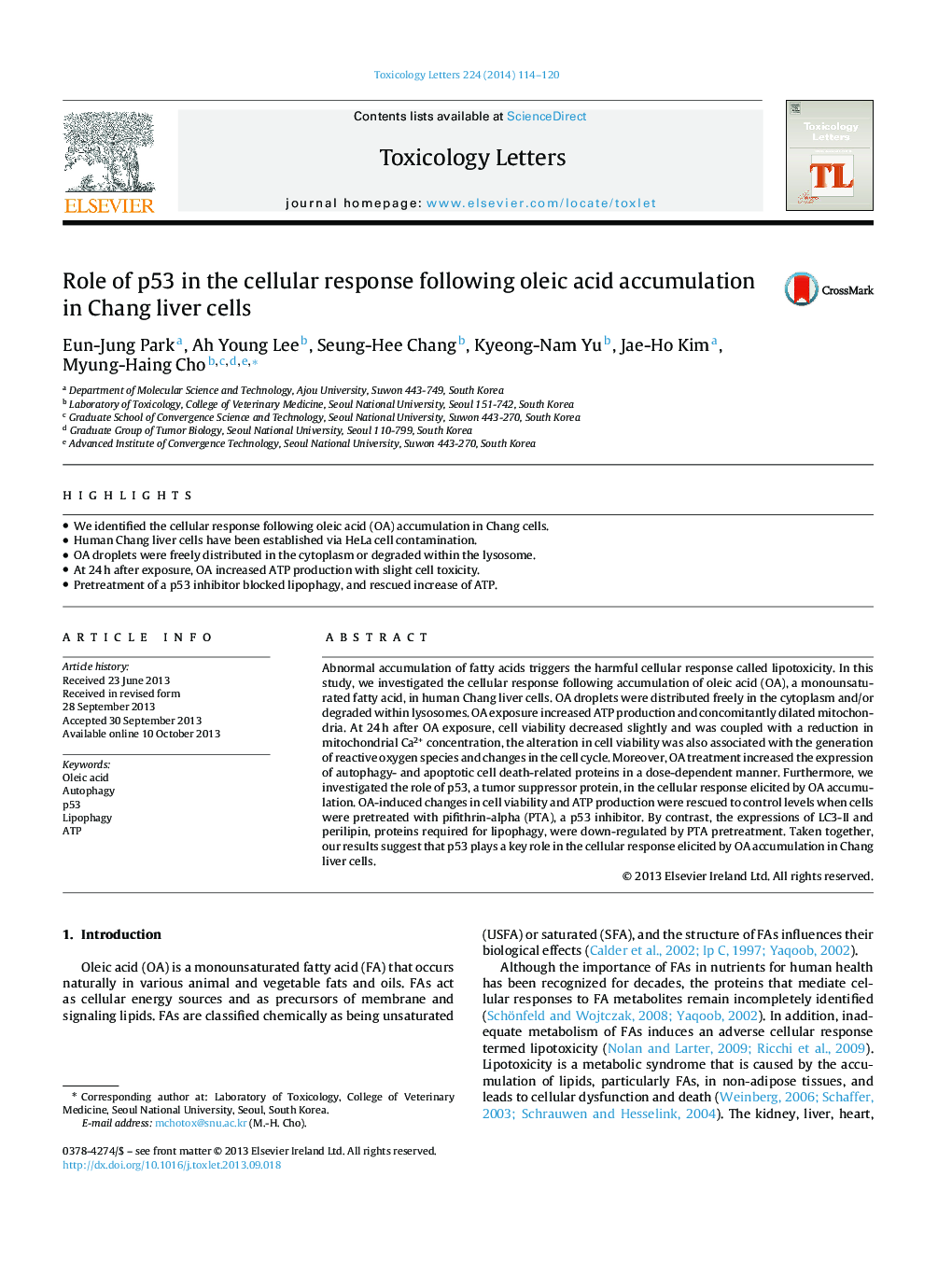| Article ID | Journal | Published Year | Pages | File Type |
|---|---|---|---|---|
| 2599121 | Toxicology Letters | 2014 | 7 Pages |
•We identified the cellular response following oleic acid (OA) accumulation in Chang cells.•Human Chang liver cells have been established via HeLa cell contamination.•OA droplets were freely distributed in the cytoplasm or degraded within the lysosome.•At 24 h after exposure, OA increased ATP production with slight cell toxicity.•Pretreatment of a p53 inhibitor blocked lipophagy, and rescued increase of ATP.
Abnormal accumulation of fatty acids triggers the harmful cellular response called lipotoxicity. In this study, we investigated the cellular response following accumulation of oleic acid (OA), a monounsaturated fatty acid, in human Chang liver cells. OA droplets were distributed freely in the cytoplasm and/or degraded within lysosomes. OA exposure increased ATP production and concomitantly dilated mitochondria. At 24 h after OA exposure, cell viability decreased slightly and was coupled with a reduction in mitochondrial Ca2+ concentration, the alteration in cell viability was also associated with the generation of reactive oxygen species and changes in the cell cycle. Moreover, OA treatment increased the expression of autophagy- and apoptotic cell death-related proteins in a dose-dependent manner. Furthermore, we investigated the role of p53, a tumor suppressor protein, in the cellular response elicited by OA accumulation. OA-induced changes in cell viability and ATP production were rescued to control levels when cells were pretreated with pifithrin-alpha (PTA), a p53 inhibitor. By contrast, the expressions of LC3-II and perilipin, proteins required for lipophagy, were down-regulated by PTA pretreatment. Taken together, our results suggest that p53 plays a key role in the cellular response elicited by OA accumulation in Chang liver cells.
